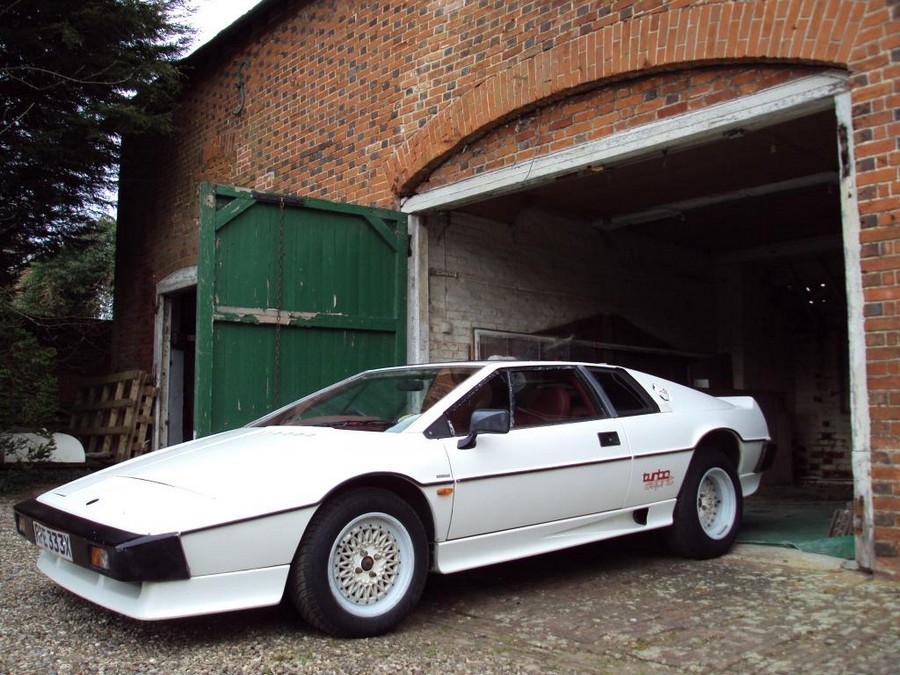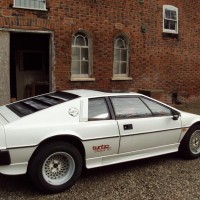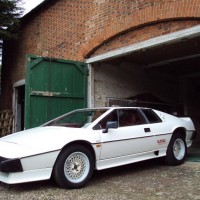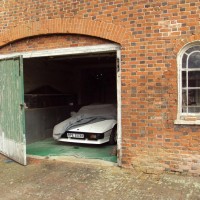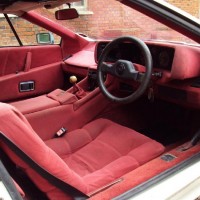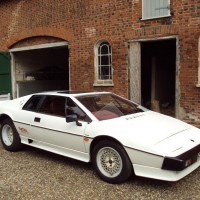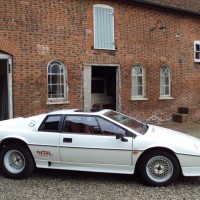SCM Analysis
Detailing
| Vehicle: | 1981 Lotus Esprit Turbo |
| Original List Price: | $47,984 (U.S. 1983) |
| Tune Up Cost: | $450 |
| Distributor Caps: | $32 |
| Chassis Number Location: | ID plate attached to right inner fender inside front trunk. Plate under windshield |
| Engine Number Location: | On ID plate attached to right inner fender inside front trunk. Top rear center of block next to bell housing |
| Club Info: | Lotus Ltd. |
| Website: | http://www.lotuscarclub.org |
| Investment Grade: | C |
This car, Lot 173, sold for $15,008, including buyer’s premium, at Silverstone Auctions’ The Restoration Show Sale, in Birmingham, England, on April 12, 2014.
I’m easily baited, and Publisher Martin knows this. This story is now my third installment (see SCM April 2014, p. 48 and SCM May 2013, p. 50) on measuring bad taste, stupidity and all that irks me in the current classic-car world. I am about to complete my first trilogy, and it will now focus on the canonization of hype in the collector-car world. We (classic-car lovers, admirers, owners and dealers) are often treated like a confederacy of dunces, and someone has to bitch and moan about it. Thank you for the opportunity.
I must first define and explain my understanding of the phrase “barn find” — and the way it is now being misused in the current auction forum.
Back in the day, “barn find” was generally reserved for that Mercedes SSK that no one knew about in a shed in London — or the Auto Union squirreled away from the Allied Forces in World War II and not found until decades later. Your Uncle Jackson’s Mercury Montego being used as a trampoline behind the dumpster at the Hooters in Davenport, IA, does not qualify.
The beater Montego was left there to rot in the elements because the local tow truck driver, who speaks like Mater in the Disney/Pixar “Cars” movie, had too much dignity in 1981 to move it! Merrrrrrrrr…….
Defining a real barn find
Here are my criteria for a legitimate barn find:
First, a legit barn find is an undisturbed, original automobile that has been stored away and forgotten — or simply just hoarded in a collection of one or 50.
Second, if the car and its location is a secret — which means that no one really knows about this bounty other than the individual who put it there a great many years ago — that’s a bonus. (Think walled-up Maserati Zagato in Sicily. Why did people entomb cars? Beats me, but that’s legit.) I’ll even concede that some cars hide in plain sight. A hidden-in-plain-sight car is known to a small circle of people that can verify its existence — but can’t get to it for one reason or another. Yes, sometimes the myth is true.
Third, cars that are abused and left for dead, neglected and sinking up their axles in mud or sitting in junkyards waiting to be parted out should NOT be hyped as the Holy Grail just because they are old and rusty. Yes, there are exceptions to this, too. No one should pass on the Mercedes-Benz Gullwing in Cuba that is now something of a legend, even though there isn’t much left of it, from what I’ve been told.
Fourth, there has to be at least a 20-year period where this rig has not turned a wheel, but the longer the amount of time, the better.
Finally, a legit barn find had been cherished, and the previous owner had been well-intentioned about it when it was parked. That broad stroke can include abandoned projects, retired race cars, heirlooms or just cars that Grandpa kept because he never sold anything.
This Esprit is no barn find
Now let’s apply my ire to Lot 173, which brought a stunning $15,008.
Any properly sorted 1983–95 Turbo Esprit is a howl to drive. During that period, the Lotus could have laid claim to being the fastest car from 0 to 60 mph, the most powerful car measured per liter, a James Bond steed — or simply a great alternative to any Ferrari or Porsche for daily driving.
Well-cared-for examples (and they are few in number, as these cars were produced in extremely limited numbers to begin with) can be great bargains relative to today’s exotic cars.
The non-specific, flowery catalog psychobabble for our subject Esprit describes the car in a rather terrifying manner. In other words, the catalog’s massive omission of anything important is what’s terrifying.
I will now translate the catalog puffery (the use of “lovingly crated” is just priceless, isn’t it?). The car was driven hard and put away wet in 1996. In 2010, the engine was taken apart by someone, checked by someone else and now it’s your problem to put it together. No idea about mileage, history, owners, previous service, why the interior looks like a 1940s French brothel or how it found its way to be photographed at the old abattoir where it was left for dead like the previous inhabitants.
Close inspection of the photos — none show the engine or engine bay, mind you — show a worn-out, fossilized parts car with a cheesy sunroof and incorrect wheels. WELL SOLD, OLD CHAP! Good on you Angus, for neglecting your car the way you did and now passing it off as a BARN FIND! A record for scrap has just been realized.
There is a better way
Some simple research shows that $10k would have bought you essentially the same car from eBay about a month ago (it is slightly less loony to buy at that price, but it is still brain damage to buy in that condition).
A little more research — and $25k — would get you a “world’s best” example of that same Turbo Esprit from a dedicated Lotus Lover who probably treated the car better than his wife, children or dog. You want a Lotus Turbo Esprit? Join the Lotus club, go to an event and meet a dedicated owner who might be considering a sale.
Do NOT get starry eyed at a project car — a filthy-dirty neglected rat — at a dedicated barn-find auction. ♦
(Introductory description courtesy of Silverstone Auctions.)
